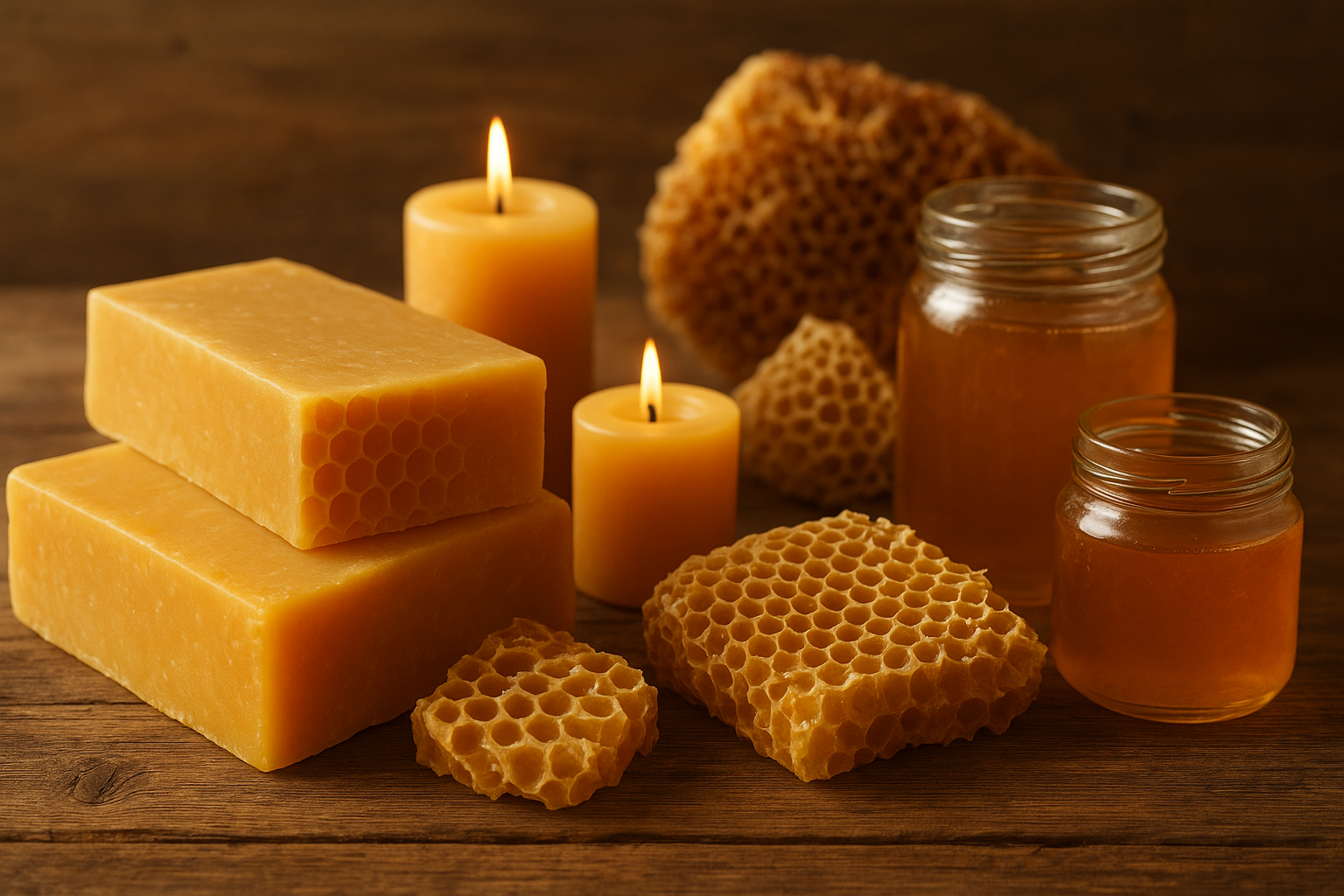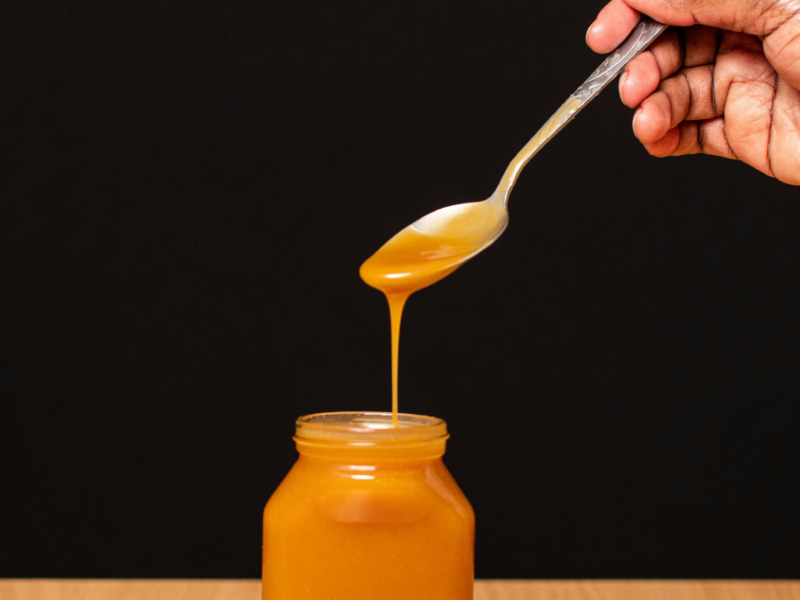Introduction
Beeswax is one of nature’s most versatile and valuable substances. Produced by honeybees as part of their hive-building process, it has been used by humans for thousands of years. Ancient Egyptians, Romans, and Greeks used beeswax for candles, writing tablets, medicine, and even mummification. Today, beeswax continues to hold a prominent place in industries such as cosmetics, skincare, food preservation, candle making, and holistic medicine.
For beekeepers, beeswax is more than just a byproduct of honey production—it is a precious resource that can bring additional income and expand the use of hive products beyond honey and propolis. In this article, we’ll explore the many uses and benefits of beeswax, its role in health and sustainability, and provide a step-by-step guide on how beekeepers can harvest it efficiently.
What Is Beeswax?
Beeswax is a natural wax secreted by honeybees (Apis mellifera) from special glands on the underside of their abdomen. Worker bees secrete wax flakes, which they then chew and mold into hexagonal cells, forming the honeycomb structure of the hive.
Characteristics of Beeswax:
- Color: Ranges from pale yellow to golden brown, depending on pollen, propolis, and age of comb.
- Texture: Solid at room temperature, softens when warmed.
- Melting Point: Around 62–64 °C (143–147 °F).
- Fragrance: Natural, sweet, honey-like scent.
Nutritional and Chemical Composition
Beeswax is not consumed as a primary food source but has a complex chemical structure that makes it extremely useful.
- Main Components: Esters, fatty acids, hydrocarbons, alcohols.
- Trace Elements: Vitamin A, carotenoids, and bioactive compounds.
- Unique Properties: Hydrophobic, antimicrobial, and preservative qualities.
This composition explains why beeswax has so many diverse applications, particularly in skincare, medicine, and food preservation.
Traditional and Modern Uses of Beeswax
1. Candle Making
One of the oldest uses of beeswax is candle production. Unlike paraffin candles, beeswax candles are:
- Smokeless and dripless when made properly.
- Naturally scented with a subtle honey aroma.
- Air-purifying, as they release negative ions that help reduce indoor pollutants.
2. Cosmetics and Skincare
Beeswax is a key ingredient in:
- Lip balms – provides moisture and a protective layer.
- Lotions and creams – locks in hydration without clogging pores.
- Soaps – adds hardness and skin-soothing properties.
Its ability to form a breathable barrier makes it highly effective in protecting and healing skin.
3. Food Preservation
Historically, beeswax was used to coat fruits and cheese to extend freshness. Today, beeswax wraps are a sustainable alternative to plastic wrap, perfect for eco-friendly households.
4. Polishes and Lubricants
- Wood polish and leather conditioner.
- Lubrication for tools, sewing threads, and zippers.
- Rust prevention for metal tools.
5. Medicine and Healing
Beeswax is widely used in traditional and modern natural remedies:
- As a base in ointments and salves.
- For soothing burns, wounds, and minor skin irritations.
- Combined with honey or propolis for antimicrobial effects.
6. Artistic Uses
- Encaustic painting (mixing beeswax with pigments).
- Wax modeling and sculpture.
- Crafting of natural crayons and art supplies.
Benefits of Beeswax
For Health and Skincare
- Moisturizing: Forms a protective barrier while allowing the skin to breathe.
- Anti-inflammatory: Helps reduce irritation and redness.
- Antibacterial: Natural defense against infections.
- Vitamin A-rich: Promotes skin regeneration.
For the Environment
- Biodegradable and non-toxic.
- Sustainable alternative to petroleum-based products like paraffin.
- Promotes eco-friendly living through products like beeswax wraps.
For Beekeepers
- Additional source of income beyond honey.
- High market demand in cosmetic, food, and craft industries.
- Easy to store and transport once purified.
How Beekeepers Can Harvest Beeswax
Harvesting beeswax is a rewarding process, but it requires careful handling to preserve quality and ensure sustainability.
Step 1: Collecting Beeswax Sources
Beeswax can be collected from several hive elements:
- Cappings wax: Wax layer covering honeycomb cells filled with honey.
- Old combs: Darker wax removed during hive maintenance.
- Burr combs: Extra wax structures built by bees in gaps.
- Damaged frames: Wax recovered from broken or replaced combs.
Step 2: Cleaning the Wax
Remove any debris, dead bees, propolis, and honey residue from collected wax.
Step 3: Melting the Wax
- Use a double boiler or solar wax melter to gently heat the wax.
- Avoid direct flame to prevent burning.
- Keep temperature around 65–70 °C for clean melting.
Step 4: Filtering
Pour melted wax through fine mesh or cheesecloth to remove impurities.
- First filtration removes large debris.
- Second filtration produces cleaner, golden wax suitable for cosmetics and candles.
Step 5: Molding and Storage
- Pour filtered wax into silicone molds or blocks.
- Store in a cool, dry place.
- Label wax according to batch and purity.
Tips for Maximizing Beeswax Harvest
- Regularly replace old combs to maintain hive hygiene and collect darker wax.
- Invest in a solar wax melter for eco-friendly processing.
- Keep honey cappings separate for the cleanest wax.
- Partner with local artisans, candle makers, or cosmetic producers for added sales.
Economic Value of Beeswax for Beekeepers
Beeswax can often sell for a higher price per pound than honey, depending on purity and demand. A beekeeper can generate:
- Direct sales: Raw beeswax blocks, pellets, or sheets.
- Value-added products: Lip balms, salves, beeswax wraps, candles.
- Wholesale opportunities: Supplying cosmetic or food industries.
This diversification ensures that beekeeping remains profitable even in seasons when honey production is lower.
Sustainability and Ethical Considerations
- Always harvest beeswax in a way that does not compromise hive strength.
- Avoid over-harvesting comb to ensure bees can continue honey production.
- Practice hygienic hive management to prevent contamination.
- Educate customers about the ecological value of beeswax and pollinator protection.
Conclusion
Beeswax is far more than a simple hive byproduct—it is a versatile, eco-friendly, and health-promoting substance with countless applications. For beekeepers, learning how to harvest and process beeswax opens new opportunities for income and sustainability. Whether it’s through candle making, cosmetics, or natural food preservation, beeswax continues to play a vital role in human culture and the global market.
By harvesting beeswax responsibly, beekeepers contribute to a cycle that supports healthy hives, eco-conscious living, and economic resilience.



